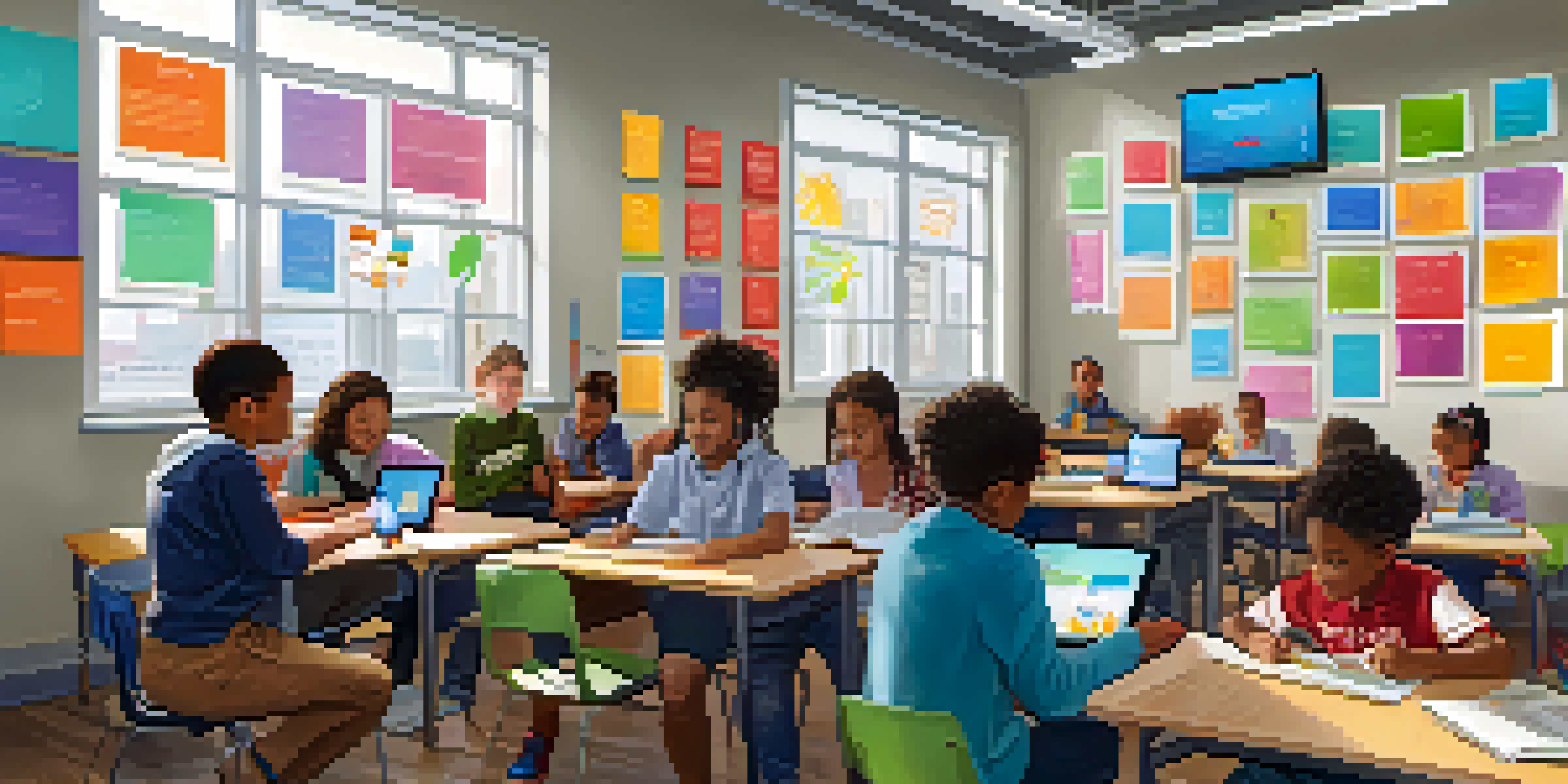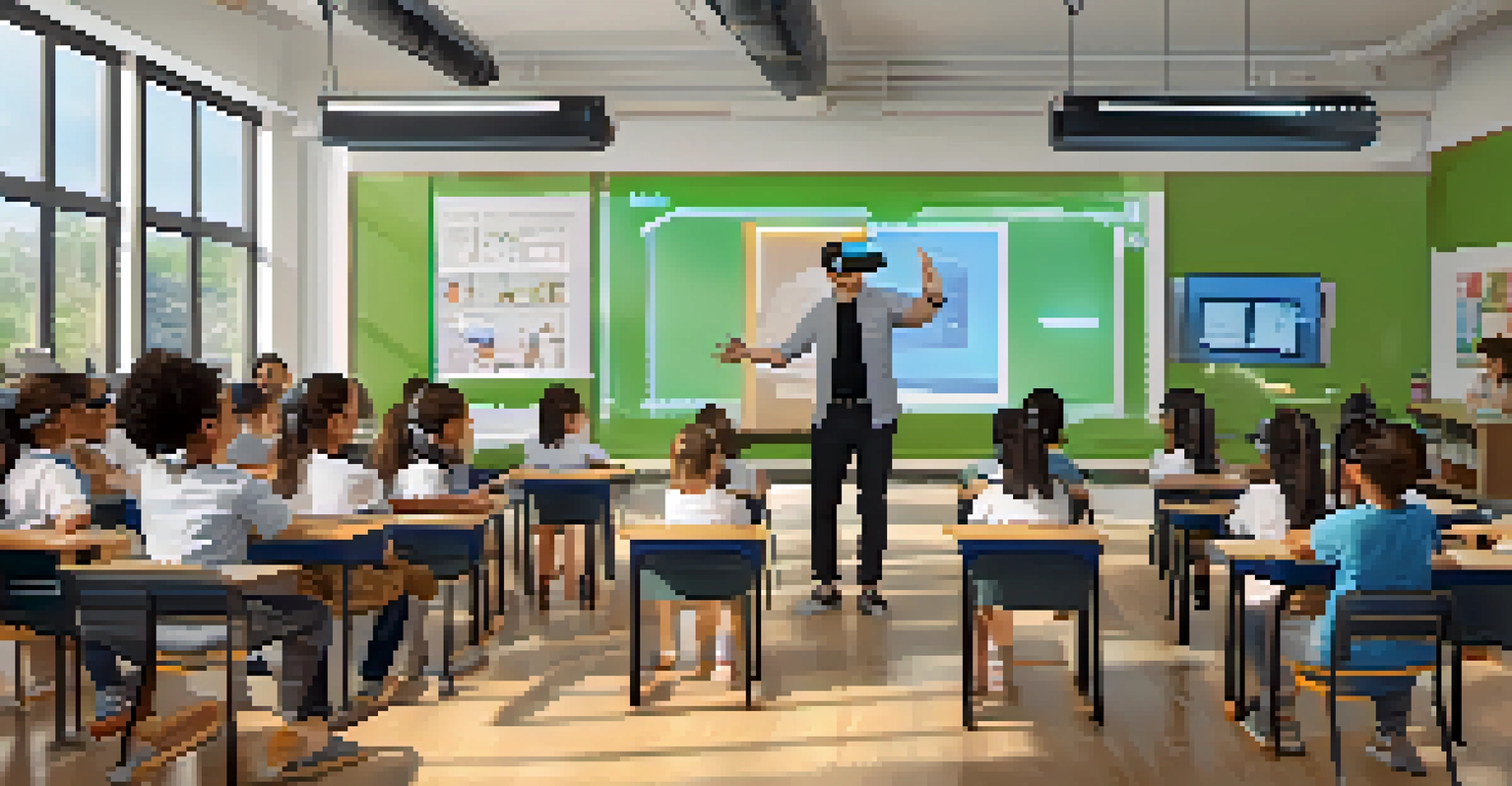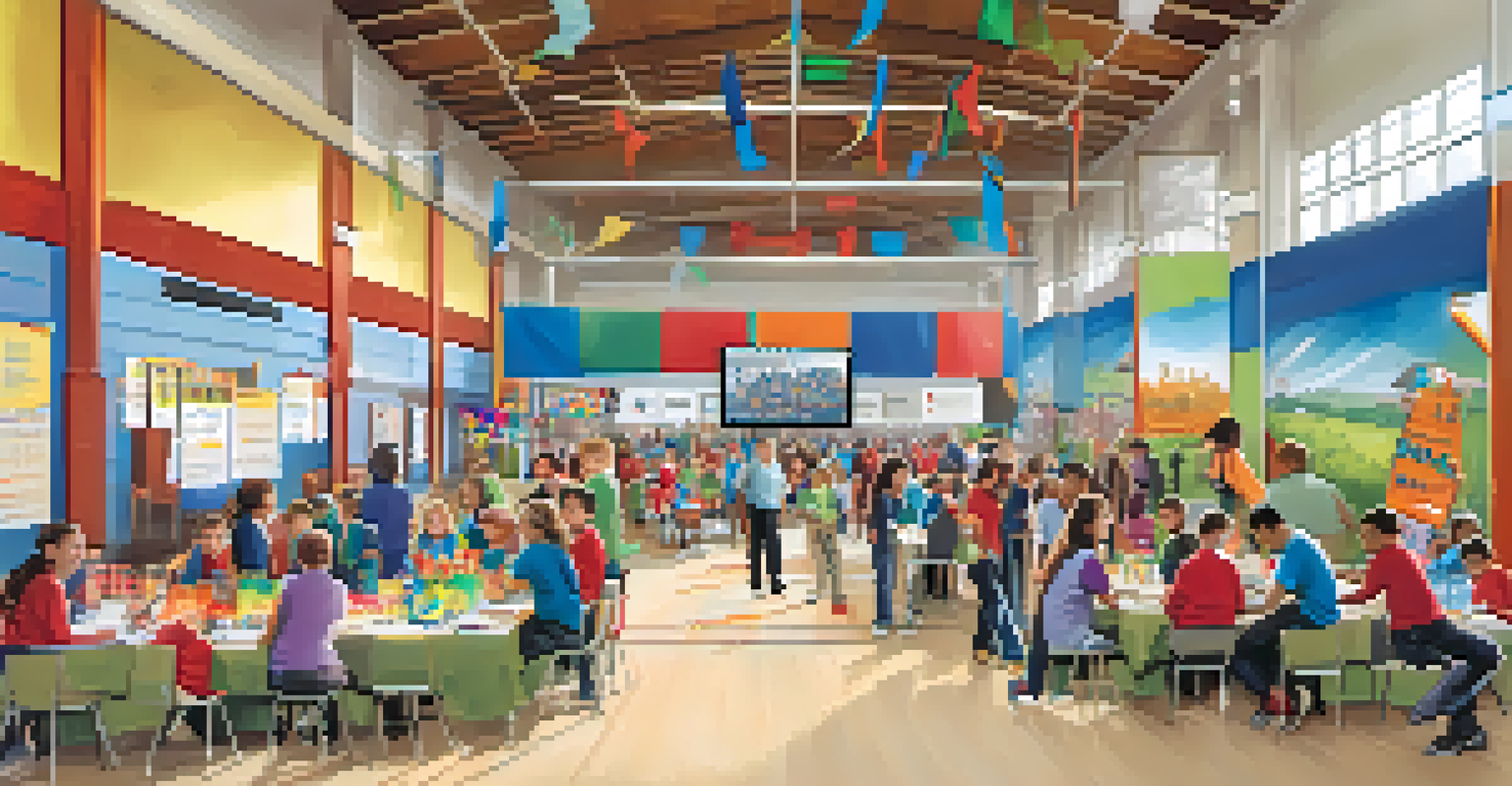Technology Integration in Detroit Classrooms: A Case Study

The Importance of Technology in Modern Education
In today’s rapidly evolving world, technology plays a crucial role in education. It’s not just about using gadgets; it's about enhancing learning experiences and preparing students for future challenges. By integrating technology into classrooms, educators can create more engaging and interactive environments, making learning accessible to all students.
Technology is best when it brings people together.
Moreover, technology helps bridge gaps in education. For instance, students who may struggle with traditional learning methods often find digital tools that cater to their unique needs. This personalized approach can significantly enhance understanding and retention of information, giving all learners a better shot at success.
Ultimately, embracing technology in education isn’t just a trend; it’s a necessity. As we look at Detroit’s classrooms, we see an exciting case study of how technology can reshape educational landscapes and empower students to thrive.
Overview of Detroit's Educational Landscape
Detroit has a rich history, but its educational landscape has faced numerous challenges over the years. With issues like funding shortages and varying access to resources, many schools in the area have struggled to provide students with quality education. However, recent efforts to integrate technology into classrooms are paving the way for positive change.

The city’s commitment to educational reform includes investing in technology infrastructure, which is vital for modern learning. Schools have begun to prioritize digital tools and resources, aiming to create equitable opportunities for students regardless of their background. This shift is not only transforming classrooms but also sparking hope for the future of education in Detroit.
Tech Enhances Learning Experiences
Integrating technology in classrooms creates engaging and personalized learning environments that cater to diverse student needs.
As we delve deeper into specific case studies, we’ll explore how these initiatives are unfolding in real-time, showcasing the impact of technology on teaching and learning.
Case Study: Technology Integration at XYZ School
At XYZ School in Detroit, technology integration is more than just a buzzword; it’s a core part of the school’s mission. Through initiatives like one-to-one device programs and interactive learning platforms, educators are transforming the way students engage with their studies. This case study serves as a beacon of hope and a model for other schools in the area.
Education is the most powerful weapon which you can use to change the world.
For instance, teachers at XYZ School have adopted digital tools that allow for personalized learning experiences. By leveraging software that adapts to individual student needs, they’re able to foster a more inclusive environment that encourages participation and growth. This creates a classroom culture where students feel empowered and motivated to learn.
The results have been promising, with improved test scores and heightened student engagement. This case study highlights the potential for technology to revolutionize education and offers a roadmap for others looking to follow in its footsteps.
Challenges Faced in Technology Integration
Despite the benefits, integrating technology into classrooms is not without its challenges. One of the primary obstacles is the digital divide; not all students have equal access to devices or reliable internet connection at home. This disparity can exacerbate existing inequalities in education, leaving some students behind.
Additionally, educators often require training to effectively use new technologies. Without proper professional development, teachers may feel overwhelmed or underprepared, which can hinder the successful implementation of digital tools in their classrooms. Addressing these training needs is crucial for maximizing the benefits of technology.
Detroit's Educational Reform Efforts
Recent initiatives in Detroit focus on investing in technology infrastructure to provide equitable educational opportunities for all students.
Lastly, there’s the challenge of ensuring that technology truly enhances learning rather than distracts from it. Striking the right balance between traditional teaching methods and digital tools is essential for fostering an effective learning environment.
Success Stories: Positive Outcomes from Integration
Amid the challenges, there are numerous success stories that highlight the positive impact of technology integration in Detroit classrooms. For example, students who previously struggled with math have shown significant improvement through the use of interactive software that makes learning fun and engaging. By transforming lessons into games, these tools capture students' attention and enhance their understanding.
Teachers have also reported increased collaboration among students, thanks to technology. With tools that facilitate group projects and discussions, students are able to work together more effectively, fostering a sense of community and teamwork. This collaborative spirit is essential for preparing students for the workforce of the future.
These success stories serve as powerful reminders of the potential that technology holds in education, inspiring other schools to follow suit and embrace innovative practices.
The Role of Community in Supporting Technology Initiatives
Community involvement is essential for the success of technology integration in schools. Local businesses, organizations, and families play a pivotal role in providing resources and support for educational initiatives. Their engagement can help ensure that schools have the necessary tools and infrastructure to implement technology effectively.
For example, partnerships with tech companies can lead to donations of devices or software, making it easier for schools to equip their students with the latest tools. Furthermore, community members can volunteer their time and expertise, offering valuable training sessions for both students and teachers.
Community Support is Crucial
Active involvement from local businesses and organizations is essential for the successful integration of technology in schools.
When the community rallies behind educational initiatives, it creates a supportive ecosystem that fosters growth and innovation. This collaboration not only enhances student learning but also strengthens the connection between schools and the neighborhoods they serve.
Future Directions for Technology in Detroit Classrooms
Looking ahead, the future of technology integration in Detroit classrooms is bright, yet it requires continued commitment and investment. As schools evaluate their current practices, there’s a growing emphasis on adopting more advanced tools and resources that can further enhance learning experiences. This might include virtual reality, artificial intelligence, and other cutting-edge technologies.
Moreover, ongoing professional development for teachers is vital. As technology evolves, educators must stay up-to-date with the latest trends and tools to ensure they can effectively support their students. Continuous learning opportunities will empower teachers to innovate and adapt their teaching methods.

Finally, fostering a culture of collaboration among schools, community organizations, and tech companies will be key to sustaining momentum. By working together, they can create a dynamic educational environment that not only meets the needs of today’s students but also prepares them for the challenges of tomorrow.